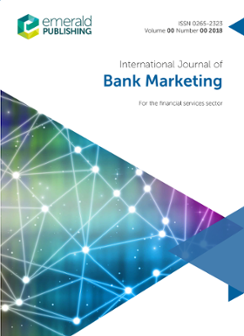重新定义数字时代的银行:银行的类型及其研究、管理和政策含义
IF 6.3
3区 管理学
Q1 BUSINESS
引用次数: 0
摘要
本研究旨在揭示银行在数字时代的演变性质及其对银行营销和管理的影响。该研究解决了整合金融科技的综合银行类型的需求,并探讨了传统银行和仅应用程序银行如何战略性地定位其品牌。关键论点是,了解银行业不断变化的格局和技术进步的影响,对于银行应对金融科技和数字化转型带来的挑战和机遇至关重要。设计/方法/方法本研究考察了文献和实践,以发展银行的类型学,描述了它们的特征、优势、劣势并提供了例子。它还为该领域的学者和实践者提出了新的研究议程。本文根据银行采用金融科技和数字技术的情况,对银行进行了分类。报告确定了三种不同类型的银行:采用金融科技的传统银行(TBAF)、传统驱动的新银行(tdnb)和数字驱动的新银行(ddnb)。TBAF是采用金融科技解决方案来增强其运营和客户体验的传统银行。tdnb代表了一种混合模式,将传统银行值得信赖的品牌和基础设施与新银行的数字能力和敏捷性相结合。ddnb是纯数字银行,只在网上运营,提供创新和用户友好的银行服务。独创性/价值本研究是一项开创性的工作,根据银行对金融科技和数字技术的利用情况对银行进行分类。该研究提供了基于金融科技采用的银行类型,为银行经理、政策制定者和研究人员提供了有价值的见解。该研究还概述了一项研究议程,建议未来的调查进一步加强对不断变化的银行业格局及其影响的理解。本文章由计算机程序翻译,如有差异,请以英文原文为准。
Redefining banks in the digital era: a typology of banks and their research, managerial and policy implications
Purpose This study aims to shed light on the evolving nature of banks in the digital era and the implications for bank marketing and management. The research addresses the need for a comprehensive typology of banks that integrates fintech and explores how traditional and app-only banks strategically position their brands. The key argument is that understanding the changing landscape of banking and the impact of technological advancements is crucial for banks to navigate the challenges and opportunities presented by fintech and digital transformation. Design/methodology/approach This study examines literature and practices to develop a typology of banks, describing their characteristics, strengths, weaknesses and providing examples. It also proposes new research agendas for scholars and practitioners in the field. Findings This paper introduces a typology of banks based on their adoption of fintech and digital technologies. Three distinct types of banks are identified: Traditional banks adopting FinTech (TBAF), Traditionally Driven Neo Banks (TDNBs) and Digitally Driven Neo Banks (DDNBs). TBAF are traditional banks that have embraced fintech solutions to enhance their operations and customer experiences. TDNBs represent a hybrid model, combining the trusted brand and infrastructure of traditional banks with the digital capabilities and agility of neo banks. DDNBs are purely digital banks that operate exclusively online, offering innovative and user-friendly banking services. Originality/value This study is a pioneering work that classified banks based on their utilization of fintech and digital technologies. The study provides a typology of banks based on fintech adoption, offering valuable insights for bank managers, policymakers and researchers. The research also outlines a research agenda, suggesting future investigations to further enhance understanding of the evolving banking landscape and its implications.
求助全文
通过发布文献求助,成功后即可免费获取论文全文。
去求助
来源期刊

International Journal of Bank Marketing
BUSINESS-
CiteScore
10.70
自引率
18.90%
发文量
54
期刊介绍:
International Journal of Bank Marketing (IJBM) aims to publish papers that relate to the marketing challenges of financial services providers around the globe.
Preference is given to empirically-based research papers that expand on existing theories (or develop new ones) on customer behaviour in financial services settings.
In addition, the journal is interested in helping academicians and practitioners in the field to better understand the discipline of financial services marketing, and as a result review papers and thought pieces are invited for submission.
 求助内容:
求助内容: 应助结果提醒方式:
应助结果提醒方式:


